The annual Geminats Trackday is back for 2025 at the Pheasant Wood Circuit in November. 1 hours drive from Canberra and 1.5 hours from Sydney.
Feature image provided by We love our cars on Instagram and Facebook.
The annual Geminats Trackday is back for 2025 at the Pheasant Wood Circuit in November. 1 hours drive from Canberra and 1.5 hours from Sydney.
Feature image provided by We love our cars on Instagram and Facebook.
July 31st is a special date for owners of the R31 Skyline. The “31” is obvious, and July being the 7th month is significant as the R31 represents the 7th generation of the Skyline. As such, R31 owners celebrate the date with a get-together.
The Adelaide Auto Expo is South Australia’s premier automotive event, showcasing a wide range of custom cars, street machines, hot rods, and classics. Held at the Adelaide Showground, it features elite builds, trade stands, and family-friendly entertainment across two action-packed days.
Motorsport in Australia is a vibrant, accessible, and exhilarating pursuit open to people of all ages and experience levels. Whether you dream of racing wheel-to-wheel or just want to enjoy the thrill of driving on a track, here’s how you can get started.
1. Join a Motorsport Australia Affiliated Car Club
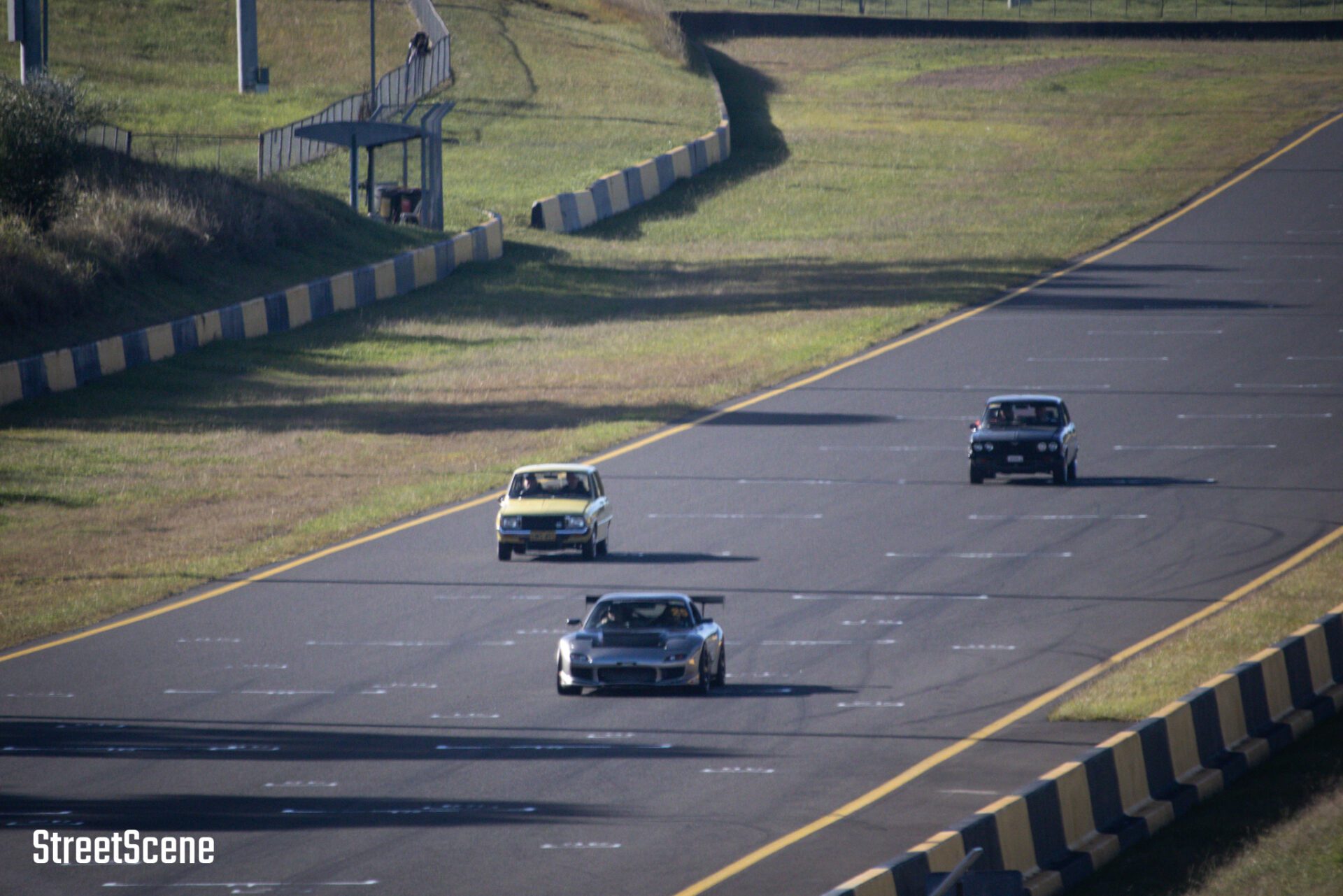
2. Try a “Come and Try” Day
3. Understand the Types of Motorsport Events
Australia offers a wide range of entry-level motorsport disciplines:
| Event Type | Description |
|---|---|
| Motorkhana | Low-speed precision driving around cones; great for all cars and ages. |
| Khanacross | Off-road timed events, slightly faster than Motorkhana. |
| Supersprint | Timed laps on a circuit, competing against the clock, not wheel-to-wheel. |
| Hillclimb | Timed runs up a hill course, focusing on car control and speed. |
4. Get Your Motorsport Australia Licence
5. Prepare Your Car and Gear
6. Learn and Improve
7. Progress at Your Own Pace
8. Get Involved as a Volunteer or Official
Key Contacts and Resources
Final Tips
By following these steps, you’ll be well on your way to experiencing the thrill of motorsport in Australia, whether as a competitor, volunteer, or passionate fan.
The Goodwood Revival is a world-renowned vintage motorsport festival that celebrates the golden era of racing with classic cars, period dress, and historic charm. Held annually at the Goodwood Circuit in West Sussex, it offers an immersive step back in time to the 1940s, ’50s, and ’60s.
The Melbourne Motor Show is returning in 2026 and will be held from April 10-12 at the Melbourne Convention and Exhibition Centre (MCEC).
Motorsport photography in Australia offers a thrilling blend of speed, colour, and adrenaline. Whether you’re shooting at iconic circuits like Mount Panorama or a local club meet, mastering the craft requires a mix of technical skill, creativity, and a keen understanding of the sport. Here are expert tips tailored for Australian conditions to help you capture stunning motorsport images.
Panning is the essential technique for motorsport photography. By tracking a moving car or bike with your camera at a slow shutter speed, you create dynamic images with a sharp subject and a motion-blurred background, conveying the sensation of speed. Start with a shutter speed around 1/120s and adjust as you gain confidence—some pros go as low as 1/60s or even slower for more dramatic blur. The key is smooth movement: plant your feet, rotate at the hips, and follow through as if swinging a golf club. Practice is crucial, so don’t get discouraged by early misses.
The best way to improve is to shoot as much as possible at different events. Experiment with techniques, review your results, and refine your approach. Over time, you’ll develop a unique style that stands out in the vibrant Australian motorsport scene.
Motorsport photography is as much about anticipation and storytelling as it is about technical proficiency. With patience, practice, and a passion for speed, you’ll soon be capturing images that do justice to the excitement of racing down under.
Rotary Revival is back for 2025! Teaming up with Roll Racing to bring to you all another event for rotaries in November.
An interview with Alex Kerr by Justin Bush
Justin: Welcome, everybody. Hello. Welcome to our first ever live MazdACT Stories interview, coming to you from the Captains Flat Hotel. To say that there’s some trepidation would be an understatement, so please bear with.
Well, what can I say about our guest? He’s been in the group for quite a while now. I believe it was 2023 that you first came into the group?
Alex: That’s right, at the Canberra Airport. Just before Christmas.
Justin: You’d know him very well. He’s worked on a lot of people’s cars here. I think there’d likely be more people here with their hands up than down. He’s a lovely guy, always there when you need him to be.
Ladies and gentlemen; he’s your mate, he’s my mate – he’s Alex Kerr. Please make him feel welcome.

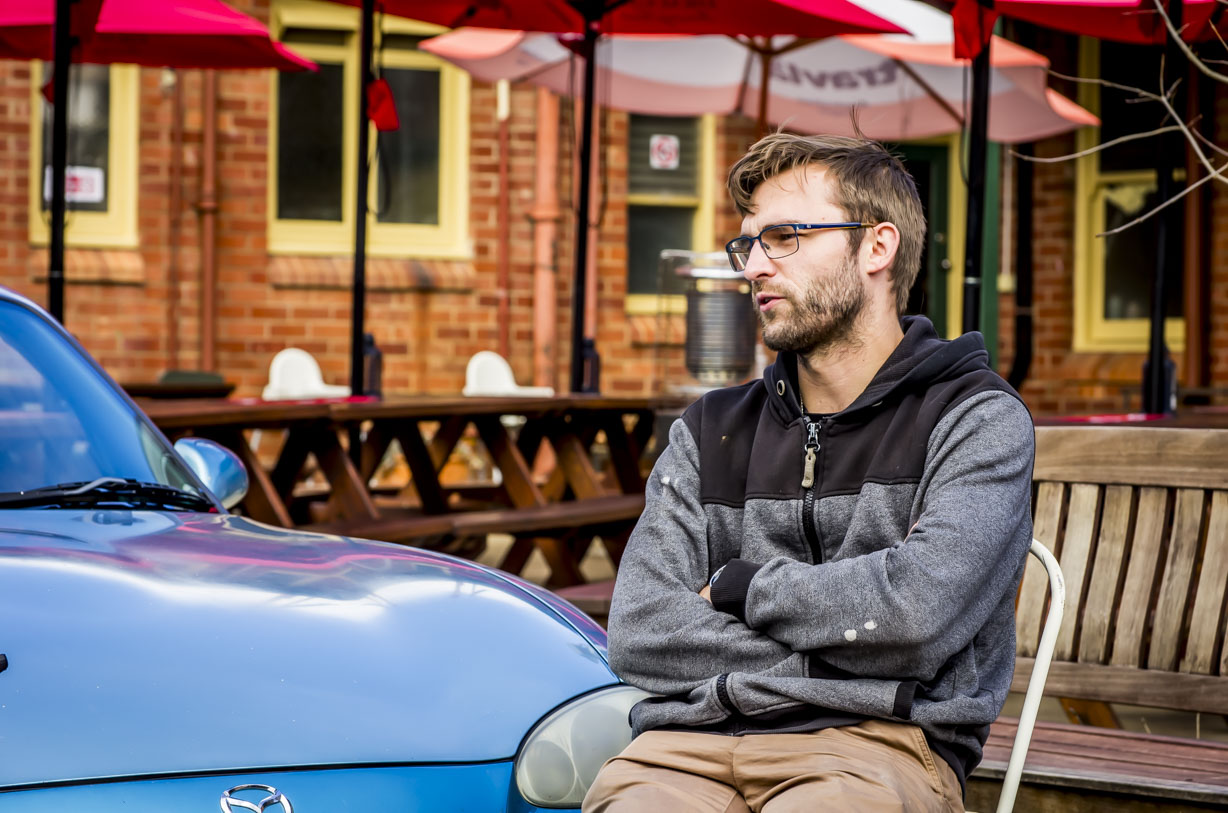
Alex: Thanks.
Justin: We’re off to a good start!
Alex: Oh, yeah! Everyone applauds me (laughter)
Justin: That’s good! You’ve got to take it in life. Now, I’d like you to tell us about young Alex.
Alex: Young Alex? How young are we talking here?
Justin: As far back as you can remember. Who’s young Alex?
Alex: Mischief.
Justin: Mischief?
Alex: To say the least.
Justin: Why?
Alex: Oh, I was always getting in trouble. Mostly just causing stress for my parents.
Justin: Your parents are here today. They’re in the audience.

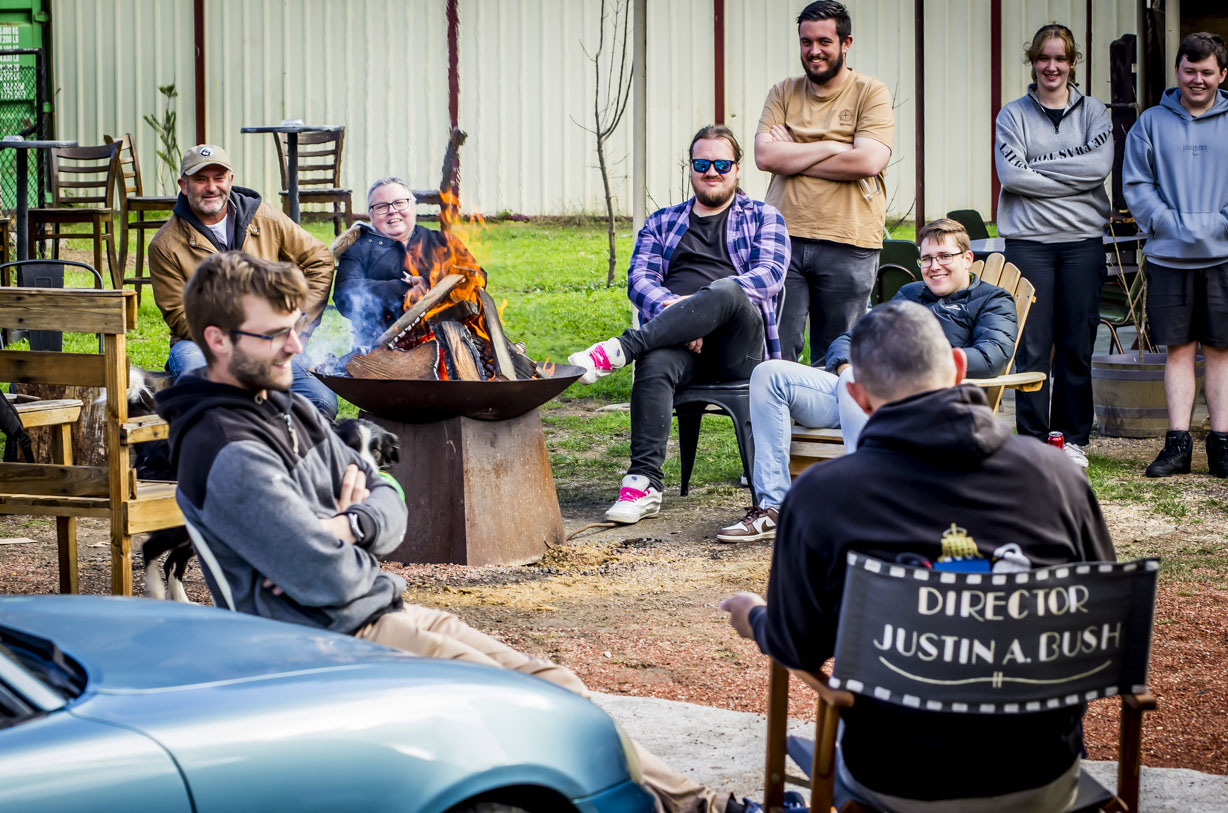
Alex: Yeah, they’re hiding there somewhere. But I was just someone who was willing to learn. I did Scouts as a kid, so I was always just wanting to not so much be independent but always learn something new. Life involvement skills in the sense of survival and stuff like that. I played soccer for about nine years, and it was always something different to learn.
Justin: Awesome. Your partner Sophie is also here today, though I’m not sure she can hear you back there?
Alex: She’s too busy playing with the dog!
Justin: How you doing, Sophie? Can you hear Alex back there?
Sophie: I’m playing with the dog, sorry (laughter)
Alex: We’ll make it work. Why do you think we’ve got a dog at home?
Justin: I was going to say, this is why! Tell me, what was your first mechanical experience as a child that you can remember?
Alex: I was probably about six years old. Dad was doing brakes on my mum’s BA Ford Falcon. It was purple and he started doing the brakes on it. He comes inside and says, I need a hand with this. I’m like, I can help. I went out there, gave him a hand and then any time he was working on a car from there, I was just helping him out – doing oil changes, brakes here and there.
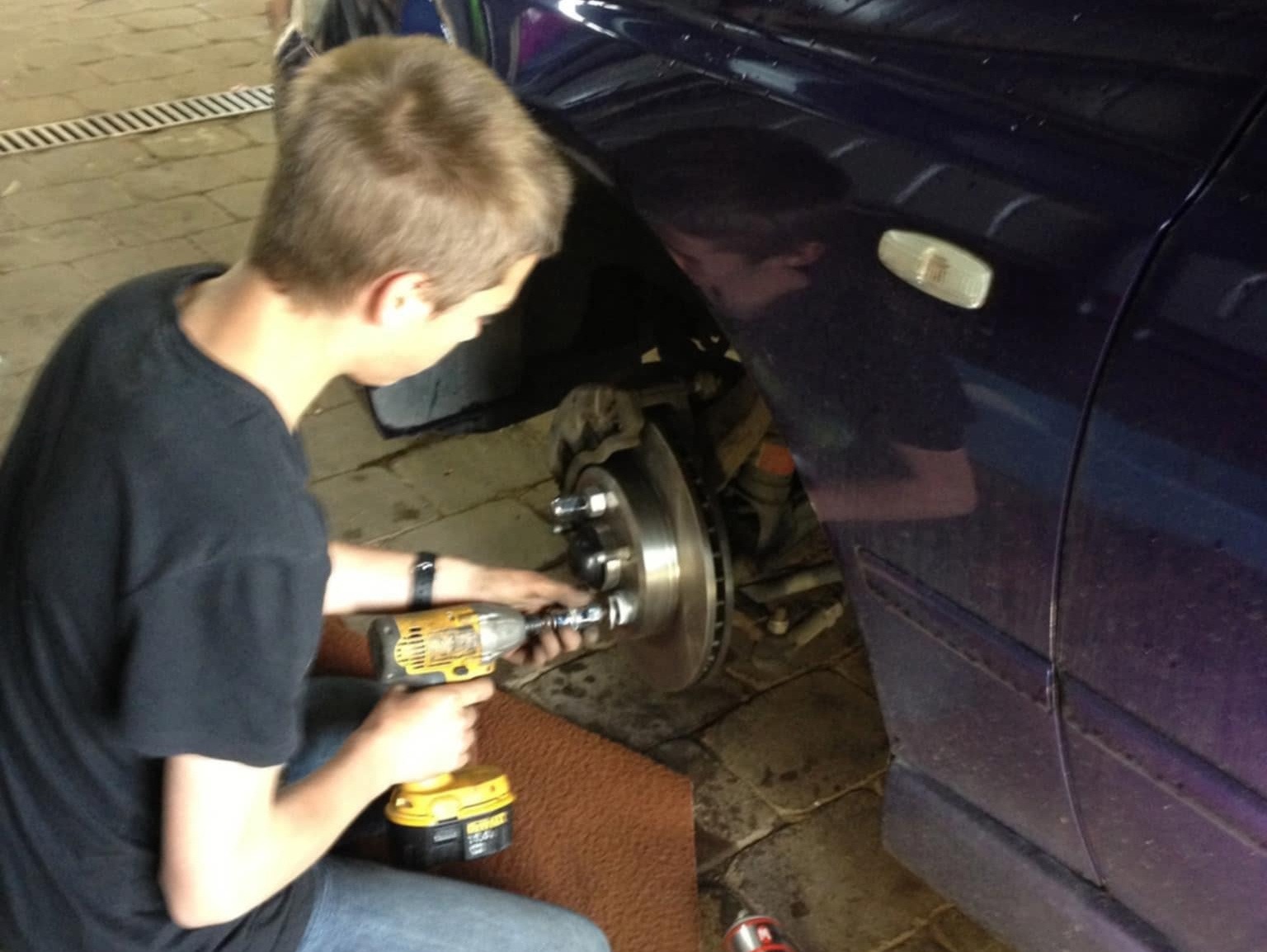
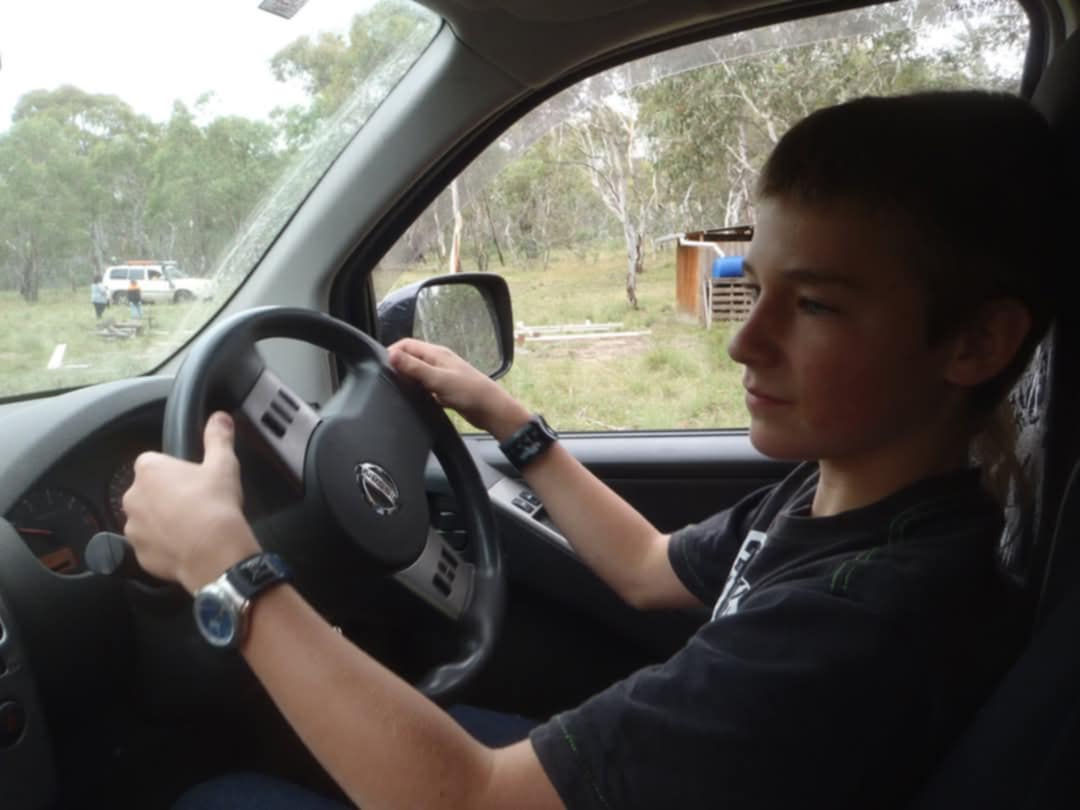
Alex discovers his passion for mechanics, working on the family car and some early driving time in his youth (Credit – Kerr Family)
Justin: (Yells) So Dad, did you appreciate the help?
Alex’s Dad: Every time. You could have said no! Less work for you to do, but then you wouldn’t be here today.
Justin: There you go. We were talking about this the other day, and I know we had to narrow it down, but what’s a memory you have working on something where you kind of went, oh, I got this! This is something I could do.
Alex: So when I was about six, that was the birth of my passion for cars and stuff like that. When I started college, the school announced they had an automotive class that had just opened, and they asked if I would be interested. I’m like, yeah, sure, why not? Give it a shot. I’ve always had a passion for cars. Let’s give it a go. From there my first task was to rebuild a lawnmower.
The school bought a whole pile of lawnmowers that didn’t run and none of them started. This is one of the old petrol lawnmowers, two stroke. We got given the dirtiest lawnmowers, and me the worst one out of the bunch.
It was covered in oil. The piston was seized, rusted solid. We had to go on with the task of getting our own piston rings and stuff, going and talking to local shops. In Kambah (a Canberra suburb), for example, back at the petrol station, there was an old mower shop there.
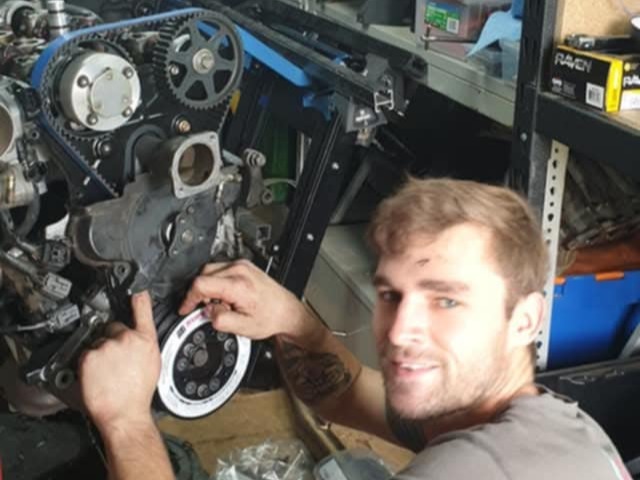
Tinkering with an engine early in the journey, building on knowledge that would later be applied to his MX5 (Credit – Kerr Family)
I went and got piston rings from there and even though mine was the worst one out of the bunch, it was the first one to be running again. After that, I’m just like, it’s either I’ve got a good talent for this, or I’ve just learned well in this aspect of things.
I’ve always been good with my hands, and I’ve always been good with thinking about how cars and engines work.
Justin: Yeah, right. I mean, it’s not something that I can say I can compare to. I bring my own car to you all the time and mechanically, I look at it and it’s just ones and zeros – it boggles my mind. But when you look at it, what do you see?
Alex: I don’t see ones and zeros. It’s the same as reading a book. I don’t picture those sorts of images in my head. When I look at a car, I see diagrams. I picture an engine breakdown; I picture all the parts laying out on a bench and how it all works and pairs together.
Justin: Wow, that’s incredible. Is there anything else in life that you see like that?
Alex: Not really, to be honest. Everything sort of just pieces together when it comes to cars. My whole life, my family that I have, the family that I’ve built between Soph and my fur babies and stuff like that, it just sort of falls together. The same as like a car just falls together – it just works.
Justin: It just works. Let’s talk about this car – where does this come into your life?
Alex: About seven years ago. I had an NA before this one. One of those with the pop-up lights. It was a boat and the suspension was shot. It overheated on the way back from Sussex Inlet on the South Coast and somehow still ran. It was great and I loved it.
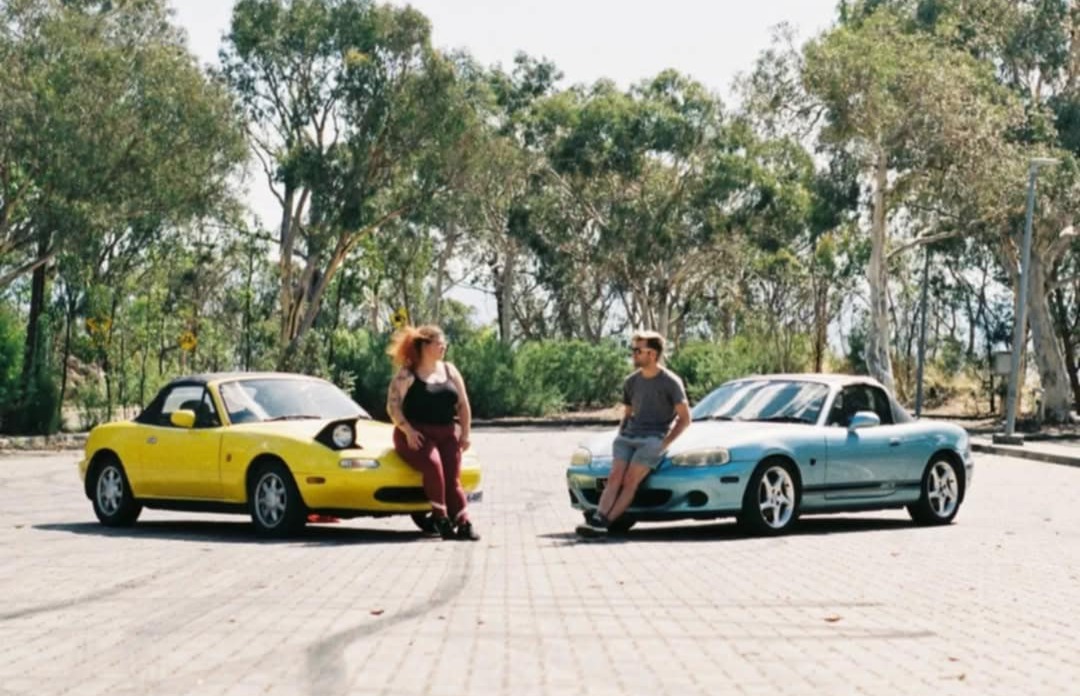
Alex and his partner Sophie at a time when two MX5’s occupied the driveway (Credit – Kerr Family)
From there, I drove it around on a day-to-day basis. It had oil leaks, it had coolant leaks, but it still ran. It was a fun little toy. Unfortunately, I crashed it. I had it for about a year, and then I crashed it. That was eight years ago. Then seven years ago, I got this one; my Dad and I drove to Sydney to get it.
After I crashed my NA, I stripped it down and sold the parts plus I utilised insurance money. I came about two grand short for this one and I had about five grand in my pocket, so I was short. I bought this for seven-two and if it wasn’t for Dad, I wouldn’t have had that money to be able to buy it. I went and looked at, I think, three MX5s in Sydney at the time. I saw the blue and just went, I’ve got to have it; it’s got to be this one! It turns out it’s a rare colour.
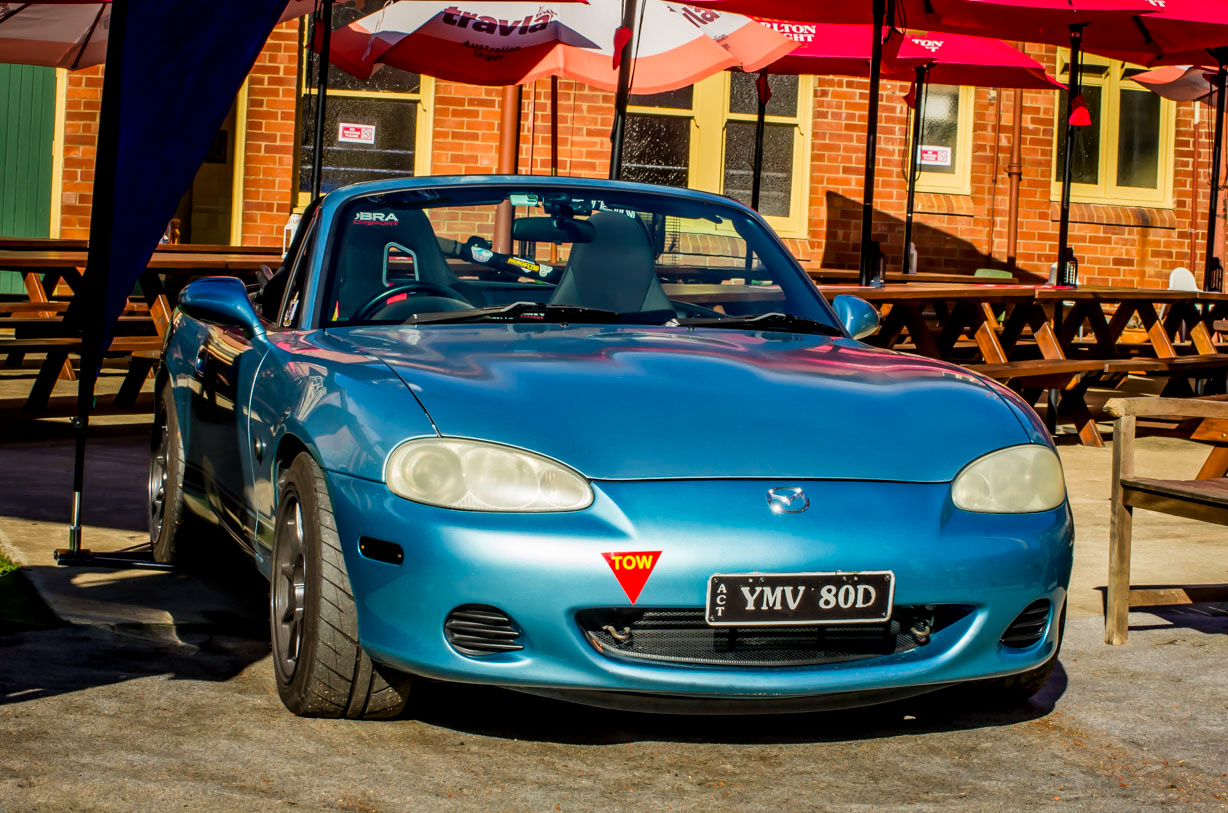
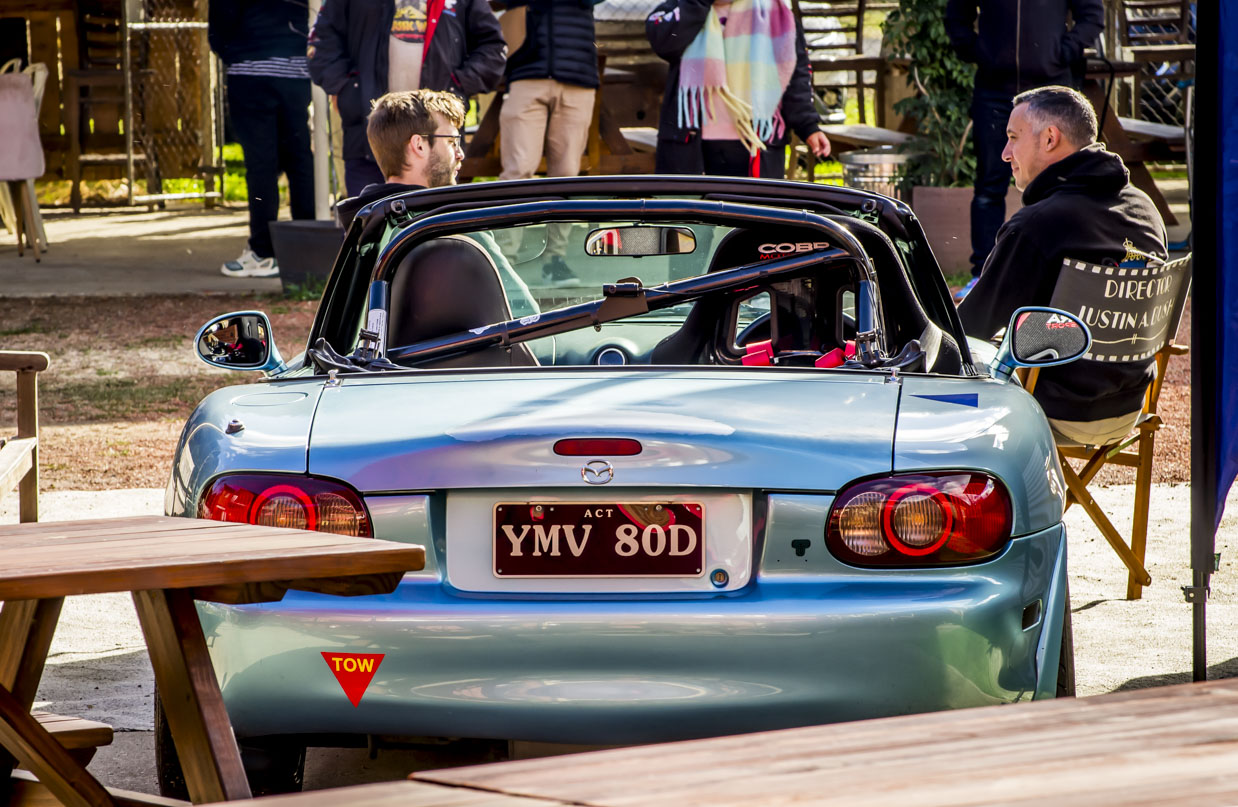
Justin: What colour is it?
Alex: It’s called Crystal Blue – Crystal Mica to be exact. I believe there was approximately 700 of them that got delivered to Australia and there was something like only 3,655 worldwide. A lot of them have come to the unfortunate ends of being crashed, and this is probably the only one in Canberra.
Justin: That’s amazing. I think it suits you; it feels like a very optimistic colour. It’s just nice.
Alex: It needs a bit of work in terms of paint work. You just don’t look too closely (laughter)
Justin: Good from afar, but far from good. We’re talking about what’s on the outside of the car but let’s duck inside the car. What have you done to this car, Alex?
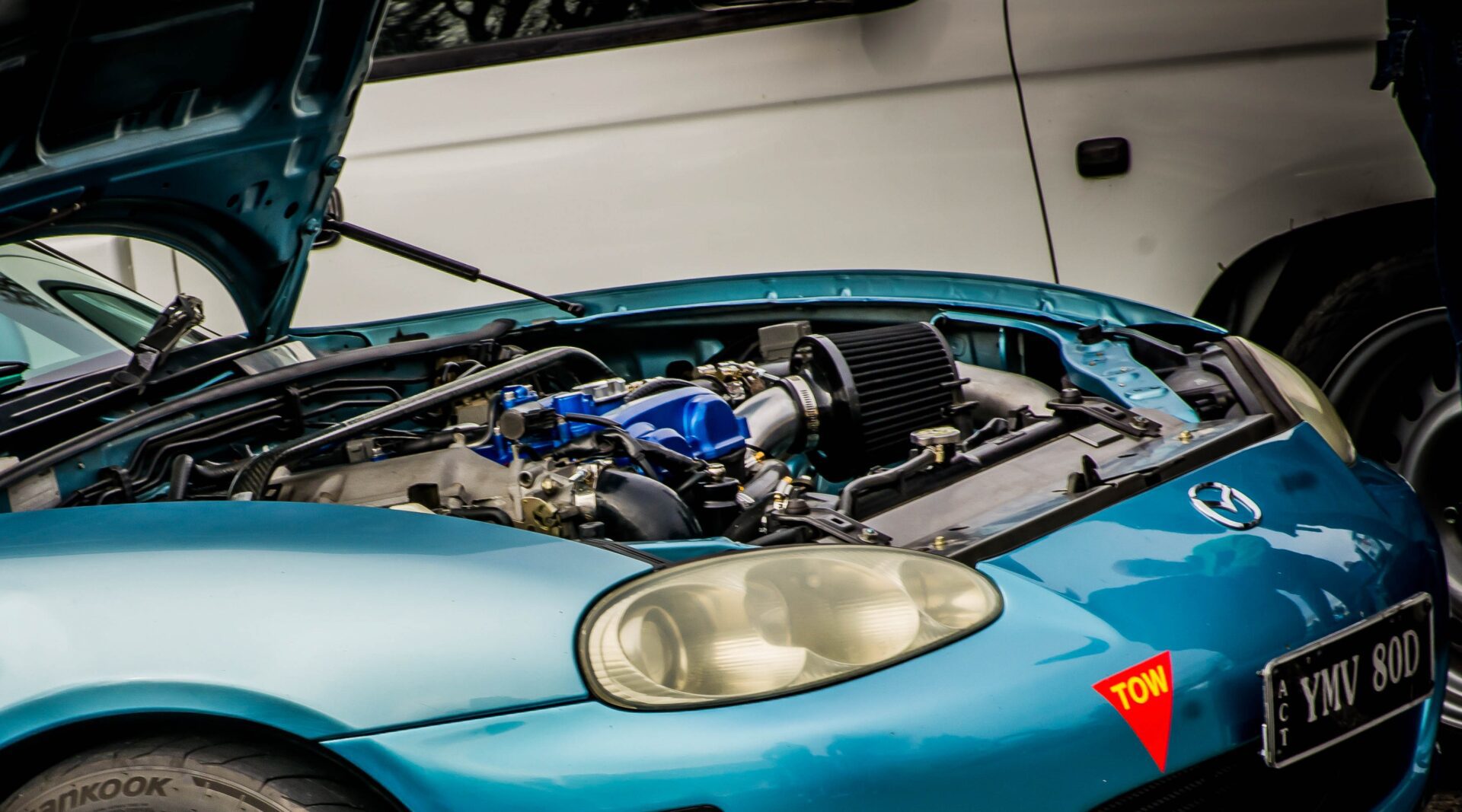
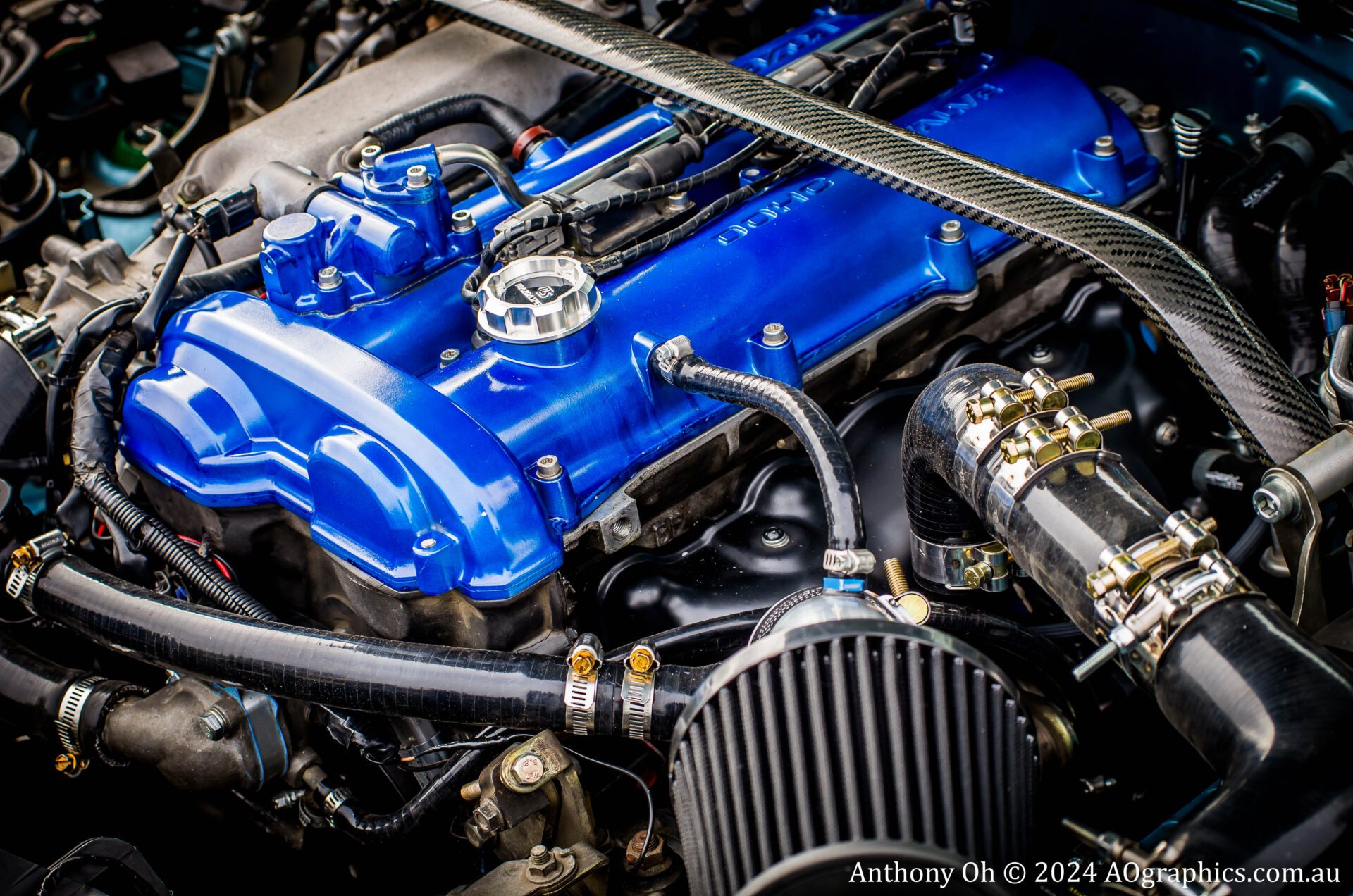
Alex: What hasn’t been done to this car? Let’s say the transmission is the one thing that hasn’t been touched.
Everything I’ve done, I did myself with some help from Dad. It has a built engine with stronger rods, pistons and valve springs that’s been turbocharged using the factory NB MX5 turbo and manifold.
It’s got a Torsen LSD from an early model MX-5. All the suspension’s been redone with polyurethane bushes and Tein coil-overs with the full electronic suspension adjustment. You then have a four-point roll cage, a brace seat that can bolt in and out and a six-point brace harness as well, which allows you to do quite a lot. You can go to the shops or go to the track.
I’ve built it not to be a grenade. I’ve built it to be a car that I can run around as a daily but still have a lot of fun with. As much as it probably uses tyres faster than your everyday car because of the amount of camber it runs, I drive it to and from work. It’s my little runaround, basically. You’ve got the proper harness seatbelt as well.
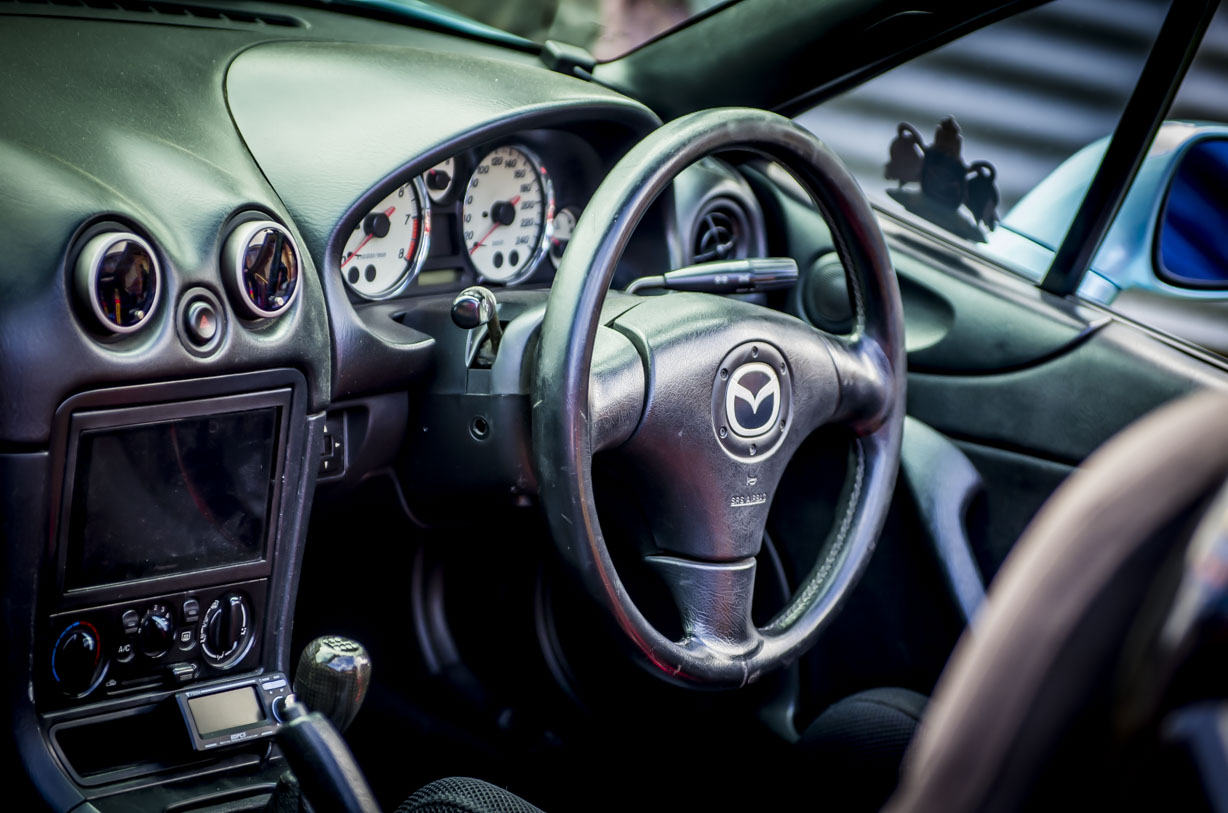
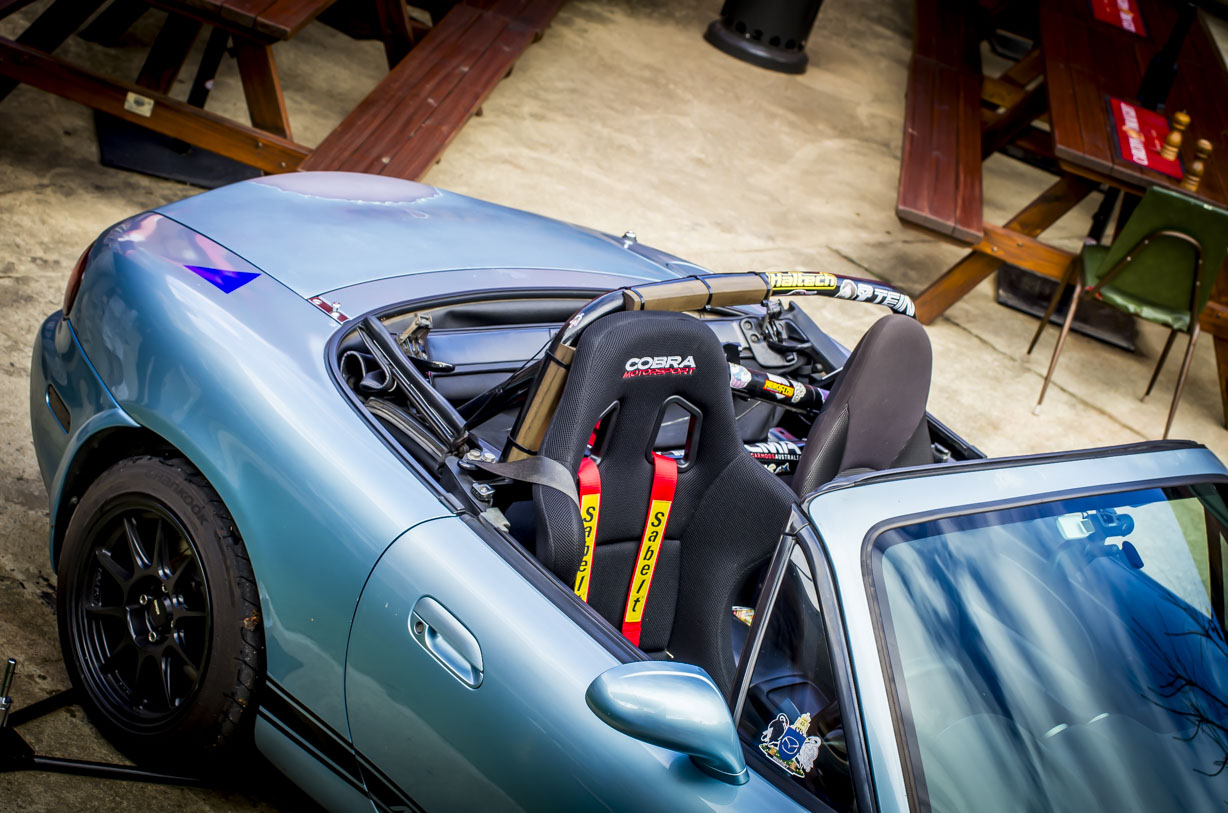
Justin: Wow, is that right?
Alex: Yeah, the proper six-point brace harness and stuff like that. I’ve got that on today. I just literally put it in yesterday in preparation for the track day coming up. When it comes past the track day, I’ll take that out and put the factory seat back in and away you go.
Justin: That’s fantastic. Having done everything you have so far, do you have any more plans for this car as time goes on?
Alex: Yes, eventually it’ll get a full respray exterior-wise, liven up the colour back to original. Eventually a bigger turbo, more power, full fuel system and all that kind of jazz. The transmission will get changed out to a sequential transmission, so faster shifts but still like a manual style. Something a bit more fun, it’ll wine its head off, but it’ll be a bunch more fun.
Justin: It’s about longevity, isn’t it?
Alex: Oh, yeah. Everything I’ve done and plan to do is for longevity. It’s a transmission that’ll handle power. The current one handles what it’s got but I don’t know for how long. You see your life flash before your eyes every time you use it. Third gear’s a little bit crunchy every now and then. I’m like, God, when’s that going to go?
Justin: Having just touched on it, what does taking this car to the track mean to you?
Alex: It’s a challenge. It pushes my own comfort levels. I like the whole idea of having a challenge. I set my own times. I like to race against my own times, try and be better, try and be faster, but it also pushes my skills as a mechanic to the limits. How well have I built this engine? How well have I done the suspension?
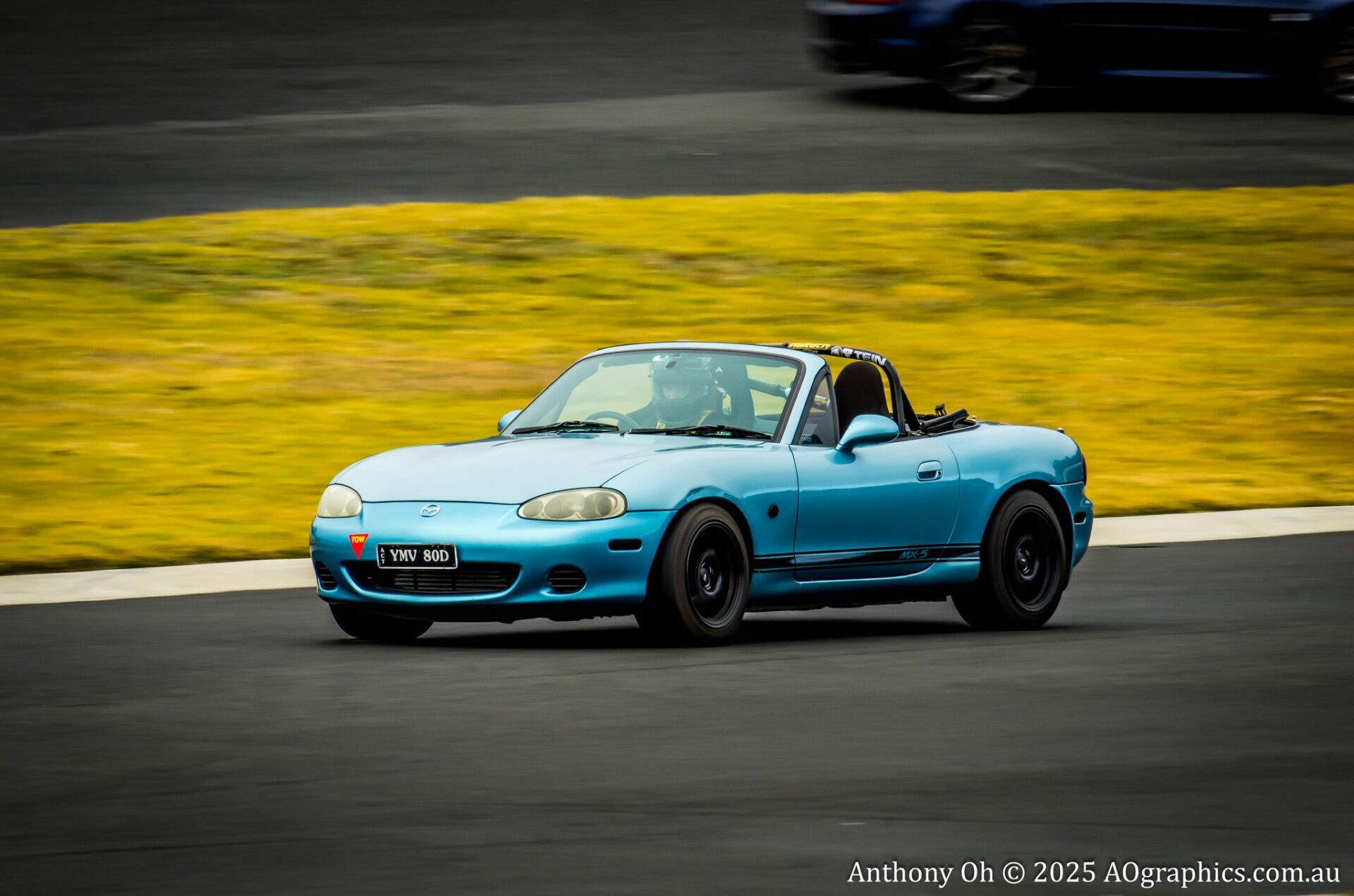
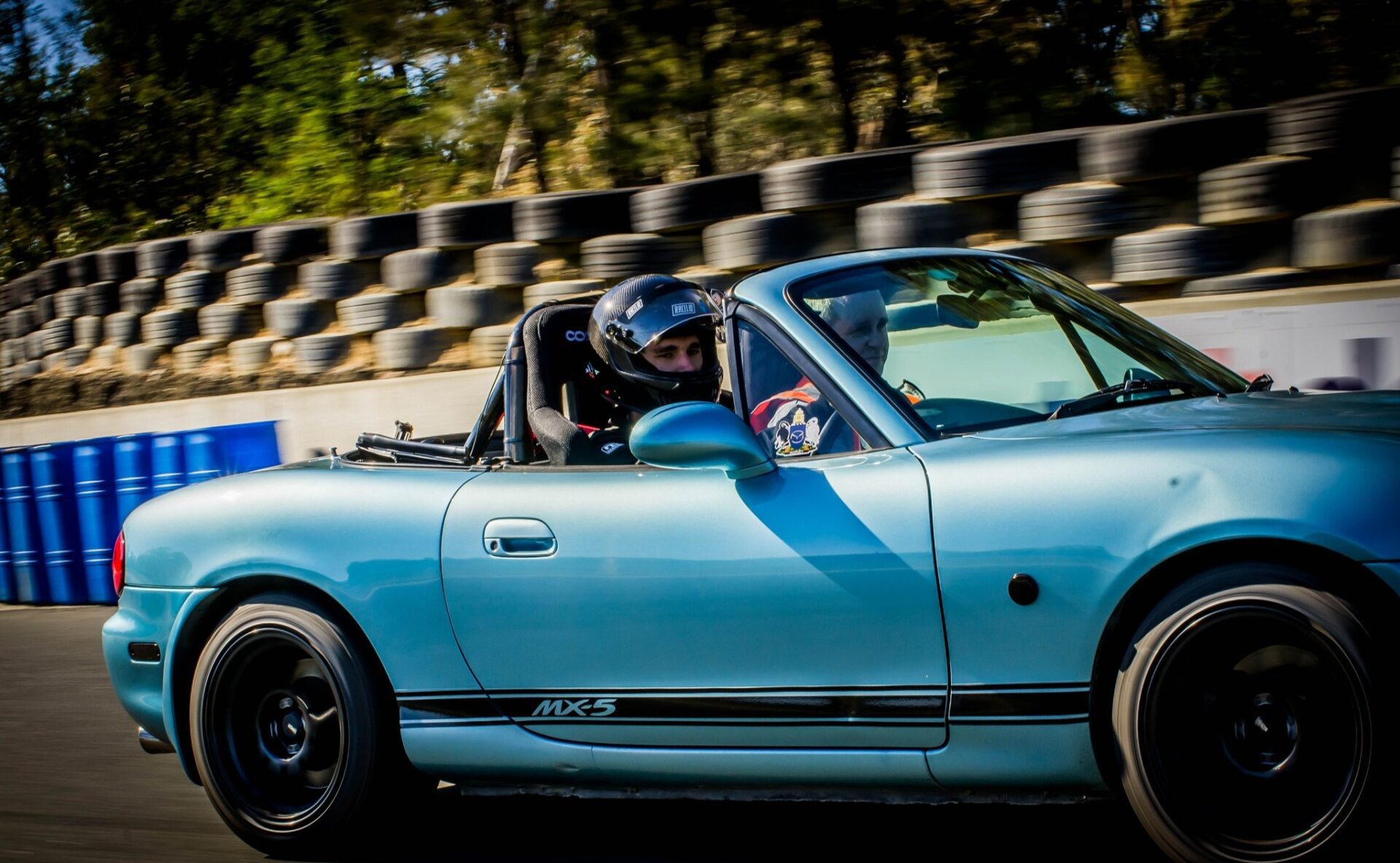
A regular at Pheasant Wood Circuit, Marulan during track days, Alex hones his skills with accuracy as he chases the clock to his own personal satisfaction, seen here in 2024 and 2025 (Credit – AO Graphics)
It challenges not just me mentally and comfort-wise for racing time, but it also challenges my physical skill as to how I’ve built this car. I’ve built it to be a track car that I can still drive home. I can go to the track and not fear blowing it up. I can go to the track and go, yep, that’s the day done. Drive home and that’s it. That’s what I’ve achieved so far. I’d only just turbocharged it after the last track day so hopefully after this next track day, I can do the exact same thing.
Justin: Good on you. I’m certainly looking forward to the next track day! Having been in the car with you, it’s an experience, to say the least. Even before it was turbocharged, it was a very fun and very fast car on the track, so I cannot wait to see what it can do.
Alex: I can’t wait to see it either. I’ll just cross the heart.
Justin: Having said that, when you look back in the Mazda catalogue, why do you feel that the MX has got such an appeal over other cars?
Alex: I don’t look at it from the Mazda catalogue point of view. I got introduced to these cars through my old job as a full-time mechanic. One of the guys that I worked with had one, took me for a drive in it, and I loved it, so I went out and bought myself one.
But ever since then, when I got this one, it’s been through thick and thin, it’s been through its ups and downs, and it’s been there when I need to clear my mind. I go for a drive, and it doesn’t matter how fast or slow I go, it always just clears the head, puts a smile on my face. No matter where I go, no matter what I do and it doesn’t matter whether I look at this one or another MX-5 on the road or even in a book or in a catalogue, I still look at these cars and think, it’s been an absolute pleasure to own one and it’s always going to be a pleasure to own one.
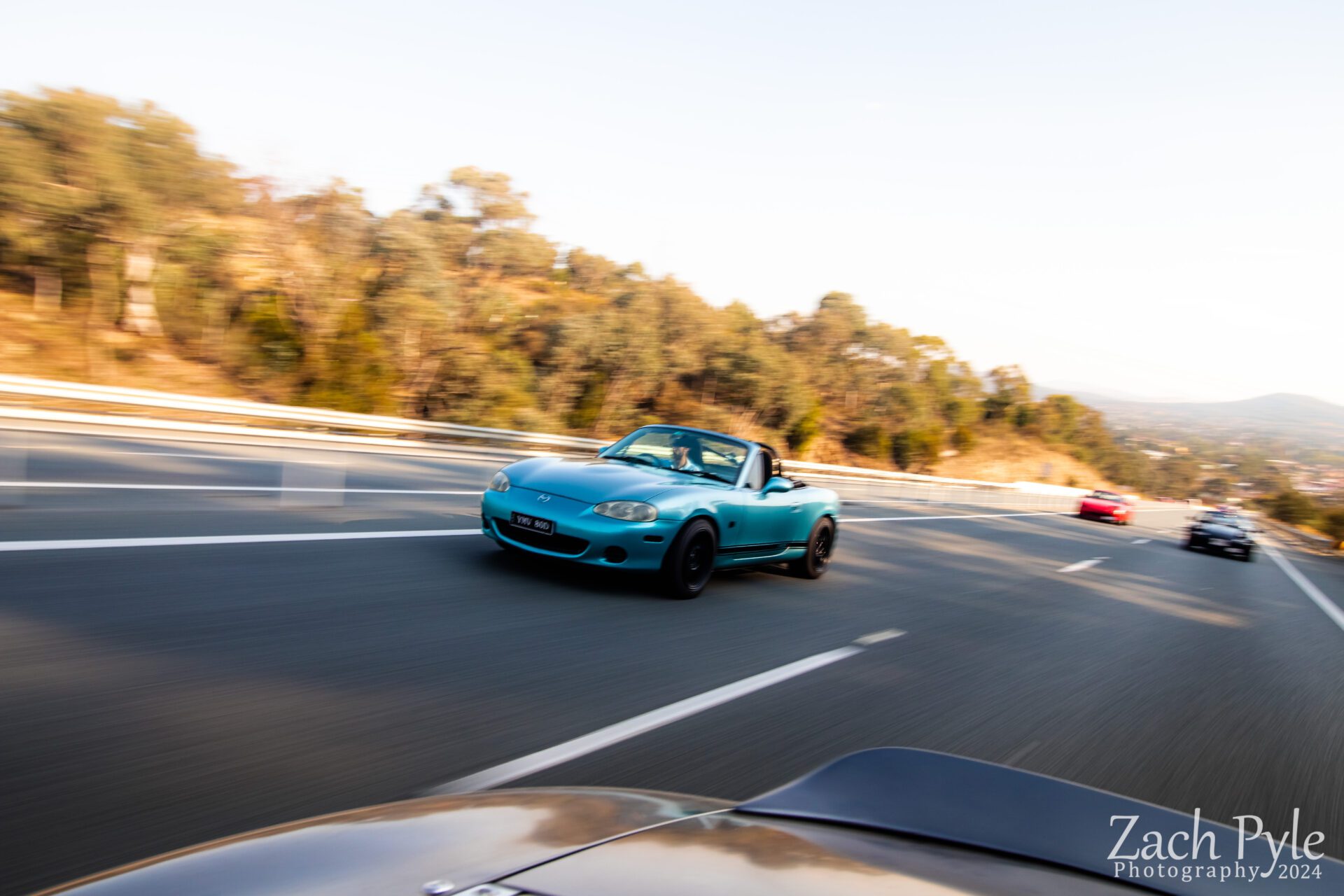
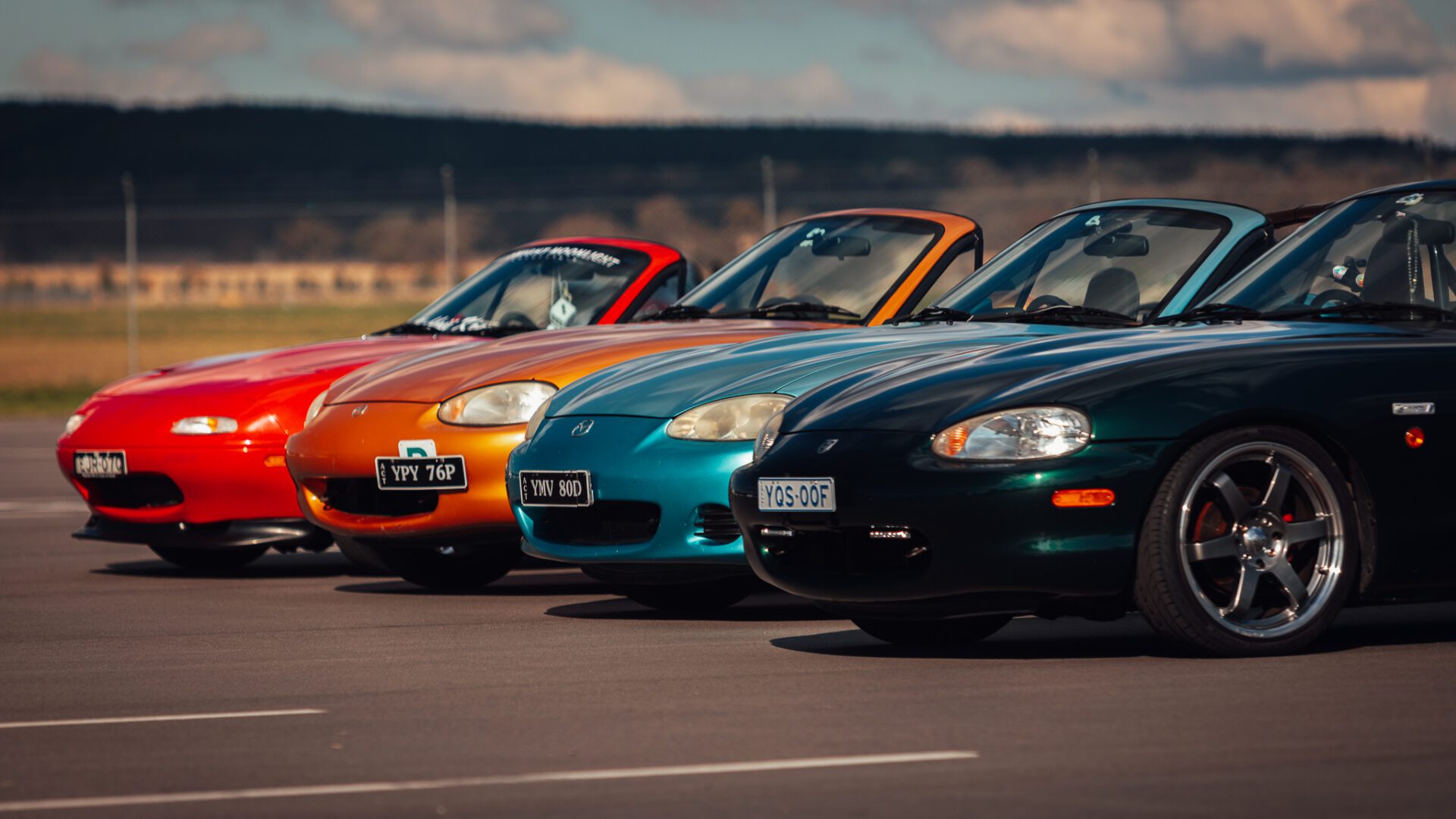
Out and about with MazdACT, seen at speed during Race the Train (March 2024) and his very first appearance for a monthly meet at the Canberra Airport (April 2023) (Credit – Zach Pyle Photography / We Love Our Cars Photography)
Justin: Good answer, Alex. That’s fantastic. Tell me, what does Mazda mean to you and why?
Alex: Fun and reliability. Every Mazda that I’ve seen, every Mazda that I’ve driven, whether it be my own car or another car through work, has been a reliable car. They’re a peppy little engine, but they’re just comfortable and they’re fun to drive. A lot of the Mazda’s that I’ve driven, even if they’re a bone stock car, even without work, if you drive them like a normal car, they’re reliable and they’re comfortable. They go on a day-to-day basis; they can get you from A to B ten million times without an issue and that’s if you look after them.
Justin: That’s what it’s all about.
Alex: That’s exactly right. Every single car brand has its, what I’d like to say, dud. The sort of car that you look at and go, I don’t want to buy that. Even Mazda has those cars, but 90% of Mazda’s, you look at them and you just go, what’s wrong with it? Why would you even bother selling it if it’s just such a reliable car? It’s fantastic and a lot of the time it’s because people just go, do I need to downsize or upsize. Personally I think Mazda has something for everyone and I love it.
Justin: Alex, this has been a blast today. I also just want to thank our audience as well. Ladies and gentlemen, put your hands together for Alex Kerr.
Alex: Thank you very much.
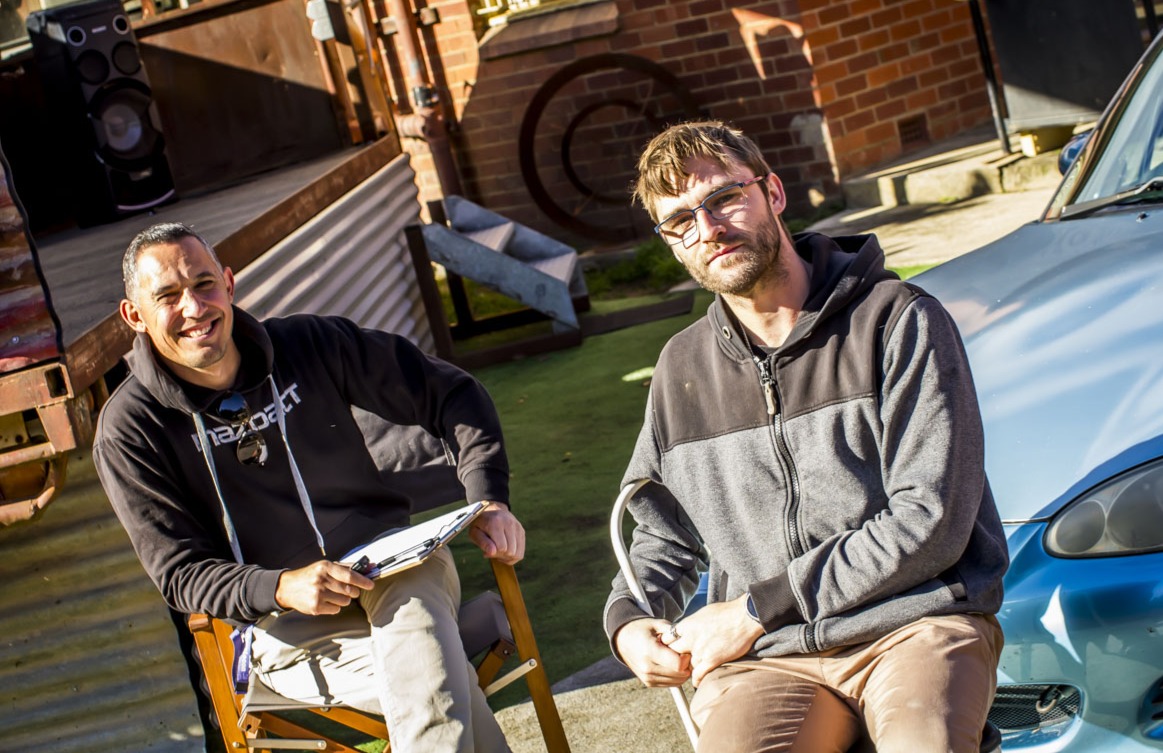
The MazdACT Stories live interview with Alex Kerr and his 2001 Mazda NB MX5 was conducted at The Captains Flat Hotel in New South Wales. Photography used here with permission by Anthony Oh at AO Graphics. Additional archival by the Kerr Family, Zach Pyle Photography and We Love Our Cars Photography. Website article formatted, assembled and hosted by Kevin Ha at StreetScene. Special thanks to the staff at The Captains Flat Hotel for their support and courtyard set backdrop and audience members of the Canberra car scene. Words, interview and story by Justin Bush at Austography Film Image Inc. for MazdACT Stories, Winter 2025.
Check out more great content by the contributors.
AO Graphics
Alex Kerr
MazdACT
StreetScene
Captains Flat Hotel
The great race is back at Mount Panorama for the Repco Bathurst 1000